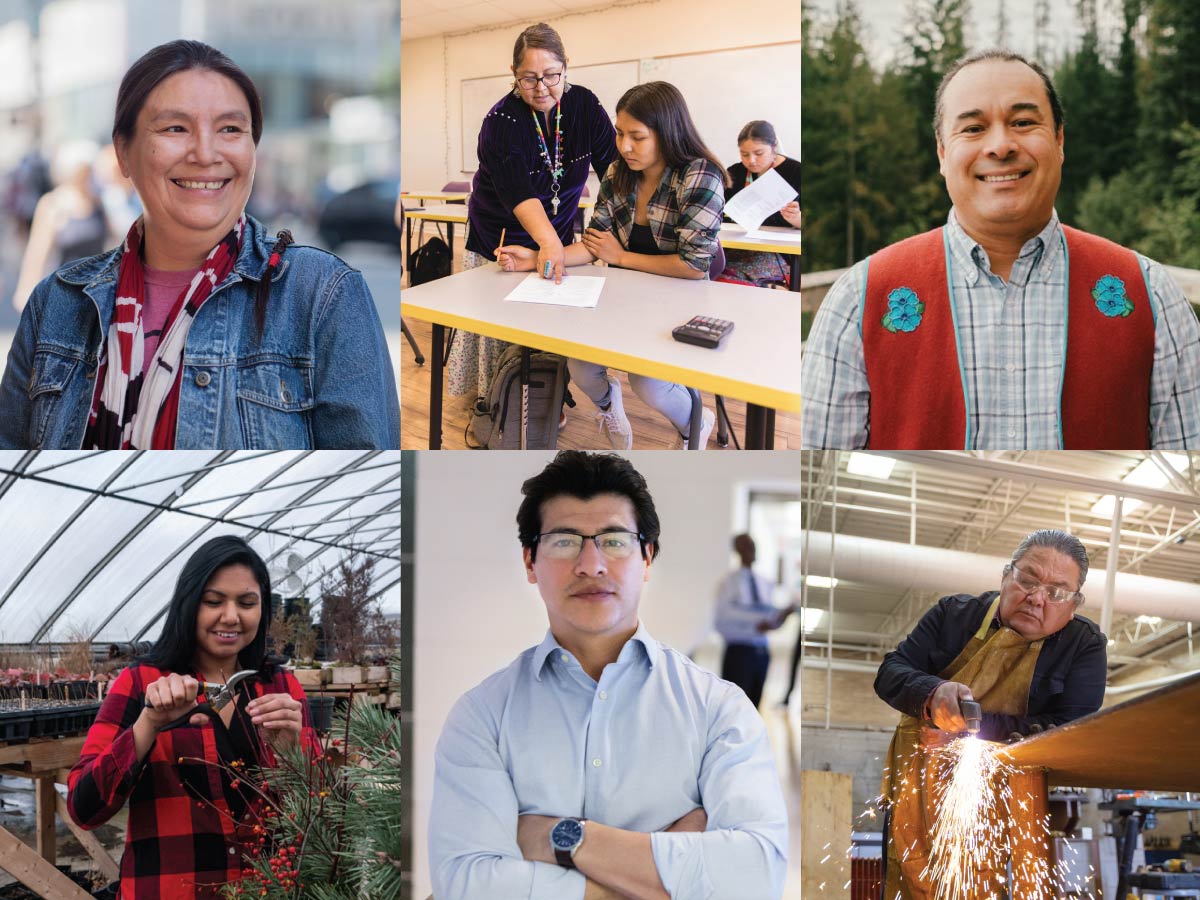Accessibility matters: Pathways to a more inclusive future
Innovation Issue 36: Spring 2022
The need to improve Indigenous populations’ access to standard work

The need to improve Indigenous populations’ access to standard work
The over-representation of Indigenous populations in non-standard jobs is leading to income inequality, says a recent report co-authored by Danielle Lamb, a Toronto Metropolitan University professor of human resource management and organizational behaviour in the Ted Rogers School of Management.
The report, Nonstandard Employment and Indigenous Earnings Inequality in Canada (external link) , written for the Journal of Industrial Relations by professor Lamb and her co-author, University of Toronto professor Anil Verma, examines earning disparities for Indigenous populations through the lens of type of work.
In their article, professors Lamb and Verma describe non-standard employment as anything outside of regular, full-time employment. They show that Indigenous men are 24 per cent more likely to be in a full-time, non-permanent job rather than a standard job when compared to their non-Indigenous peers. Also, the percentage of those who are in part-time work involuntarily is 25 per cent higher for Indigenous males, as compared to non-Indigenous, Canadian-born males.
Indigenous women are 18 per cent more likely to be in full-time, non-permanent work and 15 per cent more likely to be in involuntary part-time work, as compared to non-Indigenous, Canadian-born women.
By contrast, Canadian-born women choose to work part-time. Indigenous women are 37 per cent less likely to opt into part-time work voluntarily.
These findings are significant because non-standard work is associated with lower earnings.
“We found that the earning gaps between Indigenous and non-Indigenous earners are smaller in non-standard work,” said professor Lamb. “Non-standard work may often represent a second-tier of the labour market, and no matter who is performing the work, the pay is generally lower. What’s more concerning is the over-representation of Indigenous workers in that market.”
Barriers need to be eliminated to create more secure jobs for Indigenous workers, noted professor Lamb. “Often the answer is prescriptive – more education,” she said. However, she argues that we must look beyond education to build more achievable solutions. “The value of additional education is limited if people are unable to secure high quality employment.”
“We need to look at the pipelines into these higher quality jobs and find ways for Indigenous workers to access these jobs,” said professor Lamb, adding that quality jobs go beyond better earnings for workers. “Standard jobs have some security, typically better wages, benefits, opportunities for growth and development. They also have access to statutory protections.”

